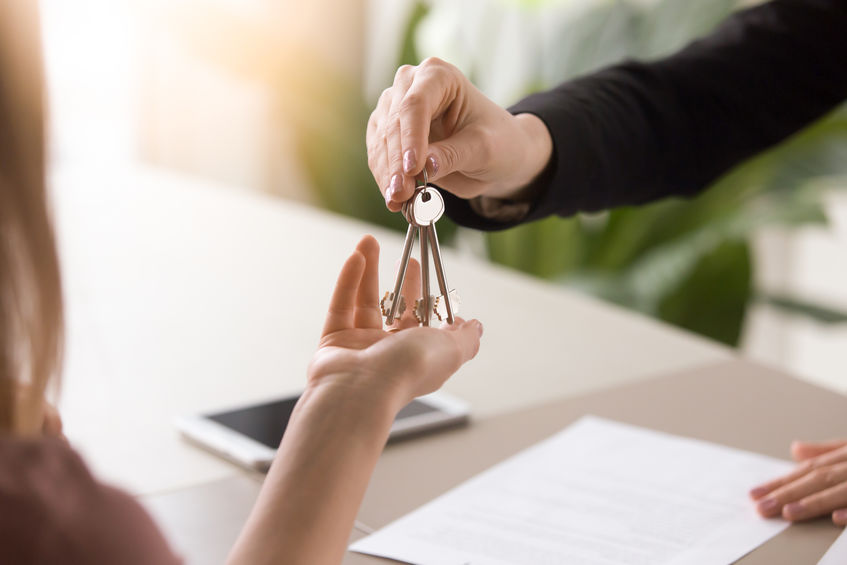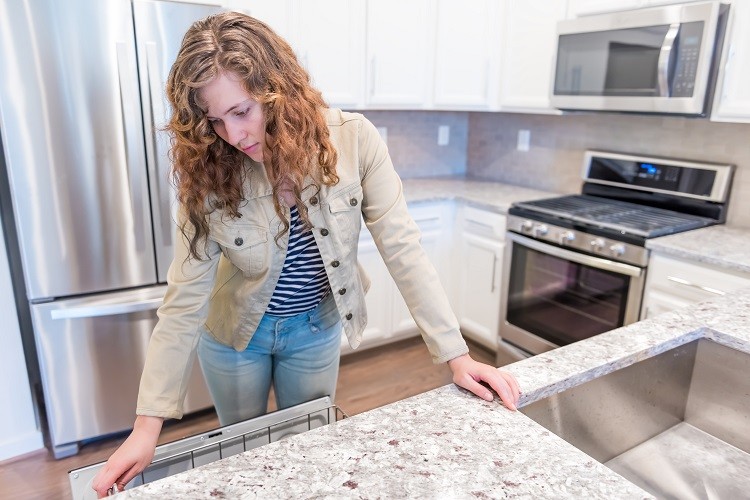What To Do Before During And After A Home Inspection
You’ve made an offer on a home and it’s been accepted, so now what? There’s probably an ample amount of time before closing, and that’s no mistake. You need to use all of that time making sure the home you made an offer on is the one you want to buy. One of the ways you can do that is by getting a home inspection. Read through this article to understand better about what a home inspection is and what to do before, during, and after a home inspection.
What is a home inspection?
A home inspection occurs after you make an offer on a home and it’s accepted. You schedule a time with a qualified home inspector, who will go through the home’s systems, appliances and structure to look for problems, malfunctions and repairs that need to be made in the home
Generally, a home inspector looks at:
Plumbing
Electrical
Heating and air conditioning
Major appliances like your fridge, dishwasher, oven, washer, and dryer.
Structure of your home, including the foundation and windows
As the inspector goes through the home, they will turn on the systems and check to make sure they’re working correctly and don’t have any major red flags. After going through the entire home, the inspector will create an inspection report detailing the state that all of your systems and appliances are in.
How much does a home inspection cost?
A home inspection can cost between $300-$600, depending on the size of the home and the inspector’s rates.
How long will a home inspection take?
The length of time it takes a home inspector to go through the home depends on how large the home is, how thorough the inspector is, and the state of the property. If the home is smaller, it can take an hour to two hours. If the home is larger or more run down, the inspection can take up to six hours.

HOME INSPECTION SURVIVAL GUIDE
It’s like a scene from a reality television show. Strangers arrive at your front door and dive into every nook and cranny of your personal space. For hours on end they open closets, crawl through your belongings, turn on every faucet in the house, flush toilets, fire up your oven and run your dishwasher or any other appliance they can find. Then, they climb your roof, wander through your basement and seemingly trounce over every square inch of your yard. Your challenge, as the contestant in this show, is to remain pleasant, cheerful and completely accommodating while these personal invaders tear through your home.
It has been reported by National Association of Realtors (NAR), nearly four out of every five homes sold in the nation are evaluated by a professional home inspector before they are sold. Hired by the homebuyer, these inspections are designed to protect the buyers from investing in a home that turns out to be a real life money pit. NAR reports that realtors recommend buyers get a home inspection nearly 99% of the time. Most buyers heed that advice, requesting home inspections in 84% of all transactions.
How It Works
Nearly all purchase contracts for homes sold today include an inspection contingency clause, a provision to allow the buyers to hire a home inspector of their choosing to thoroughly evaluate the home for any major problems.
Once the contract has been signed, inspections usually happen quickly. After an appointment is made with the seller, the home inspector arrives with buyer in tow, and goes through the entire house. Typically, a home inspection will take two to three hours or more and include a check of the home’s structural and mechanical condition. But besides the structural and mechanical inspection, inspectors may also do tests for septic systems, water wells, radon gas, check for wood destroying insects, or perform other services requested by the buyer.
According to TPREIA, a basic home inspection includes an evaluation of 10 different areas of the home: structure, exterior, roofing system, plumbing system, electrical system, heating system, air conditioning system, interior, insulation and ventilation, and fireplaces.

Here’s everything you need to know about home inspection checklist
Getting the keys and stepping into a newly completed home is always exciting for home buyers. That excitement comes with a tendency to think about things like where the furniture goes or who gets which room. However, a lot of people forget that as with anything you purchase, you need to check that the home does not have any defects. This should be the main priority as soon as vacant possession is delivered.
This is like a warranty period where any defects in the property will be rectified by the developer without any additional cost – and of course no hassle for you. We have put together a few tips and checklists to ease your house inspection journey and to ensure you are buying and up to code property that is worth
What is a home inspection?
A home inspection is a process of going through a new property to identify any defects or poor workmanship so that the developer can rectify it at no extra cost to the property owner. It is a process where you check your home thoroughly if there are any red flags. It could be the structure, utilities, grounds and rooms. It is also important to inspect the home from a safety standpoint to make sure it is hazard-free. Usually, homeowners will hire an expert to inspect the house. The inspector will then deliver a report of the major component of the home, its condition and whether it requires fixing
When should a home inspection be done?
A home inspection should be done once the buyer gets the keys to the property. Bear in mind that there will also be other owners submitting defect lists so there could be a waiting list for rectification works. To avoid disputes with the developer over who or what caused the defects, be sure to do the inspection and submit the defect list before you do any renovation or fitting works.
Who pays for a home inspection and how much does it cost?
The cost for a home inspection is borne by the homebuyer. As a buyer looking for defects in a new home, this makes sense as you would not want someone paid for by the developer to be doing this for you. The price of a professional inspector’s services depends on the size of the property assessed and the location.

Home Inspection: Find Out What an Inspector is Looking For
Whether you’re a buyer or a seller, the home inspection can make you sweat. Before you get too worked up, take a deep breath and realize that a home inspection isn’t a pass or fail thing. In fact, no home inspection will yield perfect results.
But some inspection reports are more concerning than others, and it’s important to know if an issue is a minor repair or a money pit. Here’s everything you need to know about home inspections!
What Is a Home Inspection?
Home inspections are a vital part of the home-buying process because they help the buyer avoid any surprises with the home they are purchasing. A home inspection includes an evaluation of structural elements, electrical features, plumbing, and heating and cooling systems.
A qualified home inspector will look for any health and safety problems, as well as any positive or negative property conditions. When the inspection is complete, the home inspector will provide a written, comprehensive report that details any issues with the home.
How Much Does a Home Inspection Cost?
The buyer pays for the home inspection. The cost can vary, but the U.S. Department of Housing and Urban Development estimates that it may cost a home buyer $300–500 for a home inspection. That may sound steep, but paying a few hundred dollars is worth it to avoid a costly surprise down the road!
The Keys to Performing a Proper Property Inspection
Buying a property is one of the biggest decisions most people will ever make, so you should make that the property you are going to buy has a sound structure, is pest-free and properly maintained. In order to do this, you will need to conduct a number of property inspections throughout the purchase process.
Personal inspection
An open-house viewing is the first chance you get to inspect a property. It offers a great opportunity for you to see the overall quality and features of a property. If possible, take someone else along with you, as that can person may be able to see potential issues and faults you may personally overlook.
What should you inspect?
To help you with your personal inspection, we have compiled a list of the things that you should check inside and outside the house you are buying.
Inside the house
Bedroom: How many bedrooms are there? How is their size? Are there built-in wardrobes?
Bathroom: Are there broken surfaces or damaged enamel? Cracked or lifting tiles and loose grout may be signs of water damage. Check if pipes have leaks, as well as if the toilet flushes properly and refills without an abnormal noise. Also make sure to check that the shower screen seal is correctly fitted.
Kitchen and laundry: Inquire about the age and quality of the benchtops and cupboards. Make sure there is room for all your appliances.
Taps: Check the colour and water pressure, as well as how well they drain.
Walls and ceilings: Are there cracks? If the damage is severe, repairs might cost thousands of dollars.
Doors and windows: Do the doors and windows open and close properly? If not, the frames may have warped (if they are wood) or rusted (if they are metal).
Flyscreens: Make sure they are fitted where necessary and are not damaged.
Floor coverings: Check the carpets for wear and tear and whether they need to be replaced. Lift rugs to make sure they are not covering any damage.
Furniture: Think about how your furnishings will fit with the property, whether you will need to replace them and what you may need to add.
Insulation: If you can look through the manhole into the roof, do so to check the age and condition of the insulation. In addition, ask if the walls are insulated.
Heating and cooling systems: Ask how old the units are, how well they perform and when they were last serviced.
Electrical wiring: If you find old-fashioned switches and sockets, check if they need to be replaced.
Power points: Check if they are all working, as well as if there are enough points in the right places and whether you will need to add more.
New paint: Paint is often used to hide faults, so run your hands over the walls and look at them from different angles to see if there are any problems. To see the paint job in a better light, consider inspecting the property on a bright sunny day, preferably during daytime or lunchtime.
Damp: Are there stains, water marks or paint damages? Use your sense of smell (as paint might have been used to hide damp).
Mould: Is there mould in the bathroom? If yes, it may be a sign that there is a ventilation problem to fix and that you will need to re-grout and repaint.
Pests: Look for signs of pest trouble (such as rats, mousetraps or poisons). Look particularly for signs of termite damage (such as sagging floors, springy floors and steps, and hollow-sounding beams)
Outside the house
Orientation: Which direction does the house face? It will give you an idea of the temperature of the living area.
General appearance: Check the overall state of the property. Look for damaged windows, cracks in the brickwork or cement work and whether repainting is needed.
Extensions: Check the quality of the workmanship on any extensions and look for the council approval.
External structures: Make sure carports, sheds, pergolas and decking are stable and in good condition.
Privacy: Is the property overlooked by neighbouring houses? If so, it can affect your enjoyment of your external spaces. Consider whether screens, fences or high-growing plants or trees will fix the problem.
Fencing: Do fences and gates need repairs? If so, find out your share of the cost.
Garden: Check its general condition. Are there sufficient taps for watering? Will its size and shape meet your needs? How much work will be required to maintain or improve it? In addition, check the age, condition and type of trees in it as well as whether any trees – including those owned by neighbours – have the potential to damage your property.
Roof: Are there missing, cracked or sliding tiles? A sagging roof may be a sign of underlying structural issues.
Gutters/downpipes: Look for leaks, rust, warps, holes and signs that the gutters overflow. If there are trees nearby, think about whether their leaves will cause problems. Check whether the downpipes are in order and fixed well to the stormwater drain.
Drainage: If patches in the garden are wet or muddy, it may be a sign of poor drainage. Look for any water damage on both the property itself and any surrounding structures.
Swimming pool/spa: Are there cracks or bulges in pool bottoms and sides? How are the lighting, filtration and heating systems? Check for evidence of leaks, repairs and maintenance, as well as the condition of the surrounding paving.
Fuse box: Is it modern? Does it meet safety requirements? If in doubt, get an electrician to check the box as well as the house wiring.
Asbestos: Were asbestos used? Where? (Most often, it can be found in walls, roofing and fencing.) Inhaling asbestos dust can cause serious health problems so, if there is any doubt, bring in a professional to do the assessment and removal.